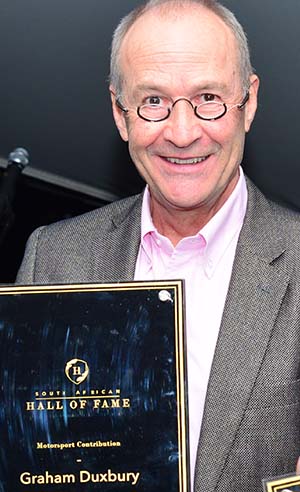New Formula One regulations were scheduled to come into effect in 2021, but due to Covid-19, their introduction has been delayed until 2022. This has given the teams extra time to design new “ground effect” cars capable of closer, more exciting racing.
 By Graham Duxbury
By Graham Duxbury
Pioneered by Colin Chapman at Lotus in the mid-1970s, ground effect aerodynamics effectively turns the entire car into an inverted wing helping to “glue” it to the track for improved cornering and faster lap times.
In November 1982 – 38 years ago – rules were introduced banning ground effect technology in a bid to reduce cornering speeds which were deemed too dangerous at the time.
Then, the teams were given just four months to design new “flat-bottomed” cars for the 1983 season.
The rule-makers’ only concession was to reschedule the South African GP from the first to the last race on that year’s calendar, giving hard-working team personnel a few days grace.
The Brabham team was in trouble. When the bombshell dropped, the design of the 1983 Brabham BT51, penned by South African Gordon Murray, was well advanced. As Murray revealed some years later, his preparedness suddenly meant he was “worse off than everybody else”.
Murray reasoned that if he tried to modify the BT51 to meet the new rules, the result would be an uncompetitive compromise. A new design philosophy was needed – quickly.
There was no time to make elaborate preparations. Wind tunnel testing would have to be shelved. Murray designed the car using, as he says, “theory, experience and gut feel”.
The result was the famous dart-shaped Brabham BT52 racer unadorned by appendages and described as “beautiful” in many reports. Murray believes the car looked that way because there wasn’t time to make changes between drawing board and race track.
One of the key elements of the car’s compact design was its small fuel tank. Murray planned to make mid-race stops for fuel – a radical idea at the time.
It worked for Murray and the Brabham team. Together with their Brazilian driver Nelson Piquet, they perfected their technique which ideally involved gaining a lead on the pack with the aid of a light, superb handling car, then pitting for fuel and new tyres and resuming the race with a clear advantage.
The plan was perfectly executed at the season’s opening race in Brazil. However, it did not take long for other teams to catch up. This, combined with a large helping of bad luck and some excellent performances by Alain Prost in the Renault and the Ferrari duo of Rene Arnoux and Patrick Tambay saw Piquet hover between the second and third places in the World Drivers’
Championship log all season long
Piquet’s luck finally turned at the Italian GP at Monza where he trounced the Ferraris to win unchallenged. He repeated the feat at the European GP at Brands Hatch, becoming the only driver in 1983 with back-to-back wins.
The championship was poised for a fight to the finish at Kyalami at season’s end. Excitement was high as three drivers were capable of taking the championship title. Prost led by the smallest of margins – two points – from Piquet. Arnoux could also be champion, but it would require him to win with Prost not scoring and Piquet no higher than fifth.
Tambay qualified on pole with Piquet second. Arnoux was fourth with Prost fifth. At the start, Piquet powered into the lead, with Prost second. When an engine failure for Arnoux ended his chances and Prost’s turbo failed, all Piquet had to do was finish in the top four. He backed off, and eventually give up the lead to his teammate Riccardo Patrese who took his first win of the season.
Piquet secured his second world championship and Ferrari, with two drivers regularly in the points, took the constructors’ title.
Was the Brabham BT52 the ideal weapon? With hindsight, it was not, says Murray. Given more time he would have made changes to the car’s weight distribution and added sidepods as their fitment would have recovered some lost downforce.
Nevertheless, Murray’s campaign was “inventive, dynamic and flexible,” according to one media report. His championship win, while not as dominant as he might have wished, was justified and his hurried, intuitive design fully vindicated.
Photocredit: ultimatecarpage.com
